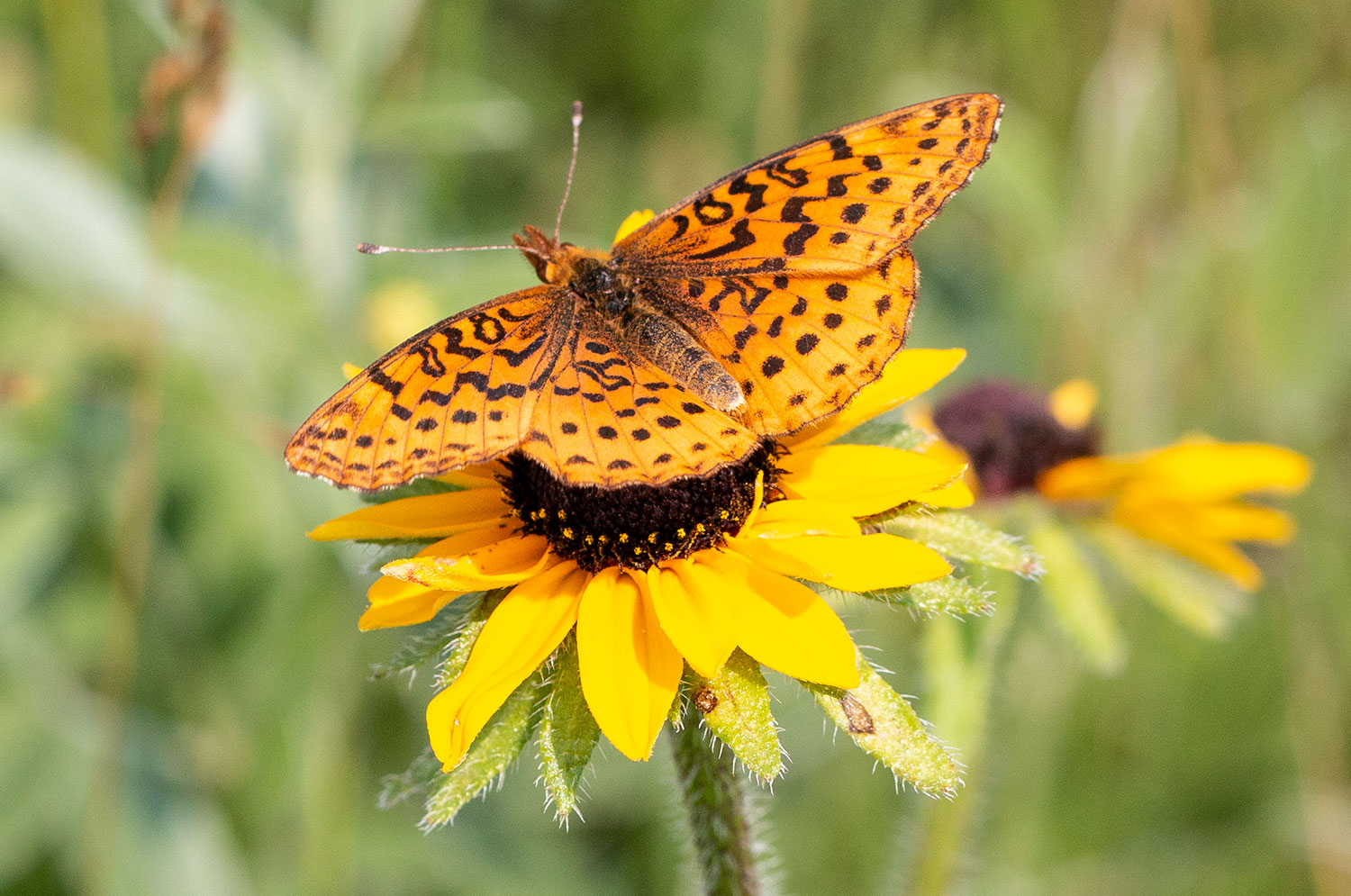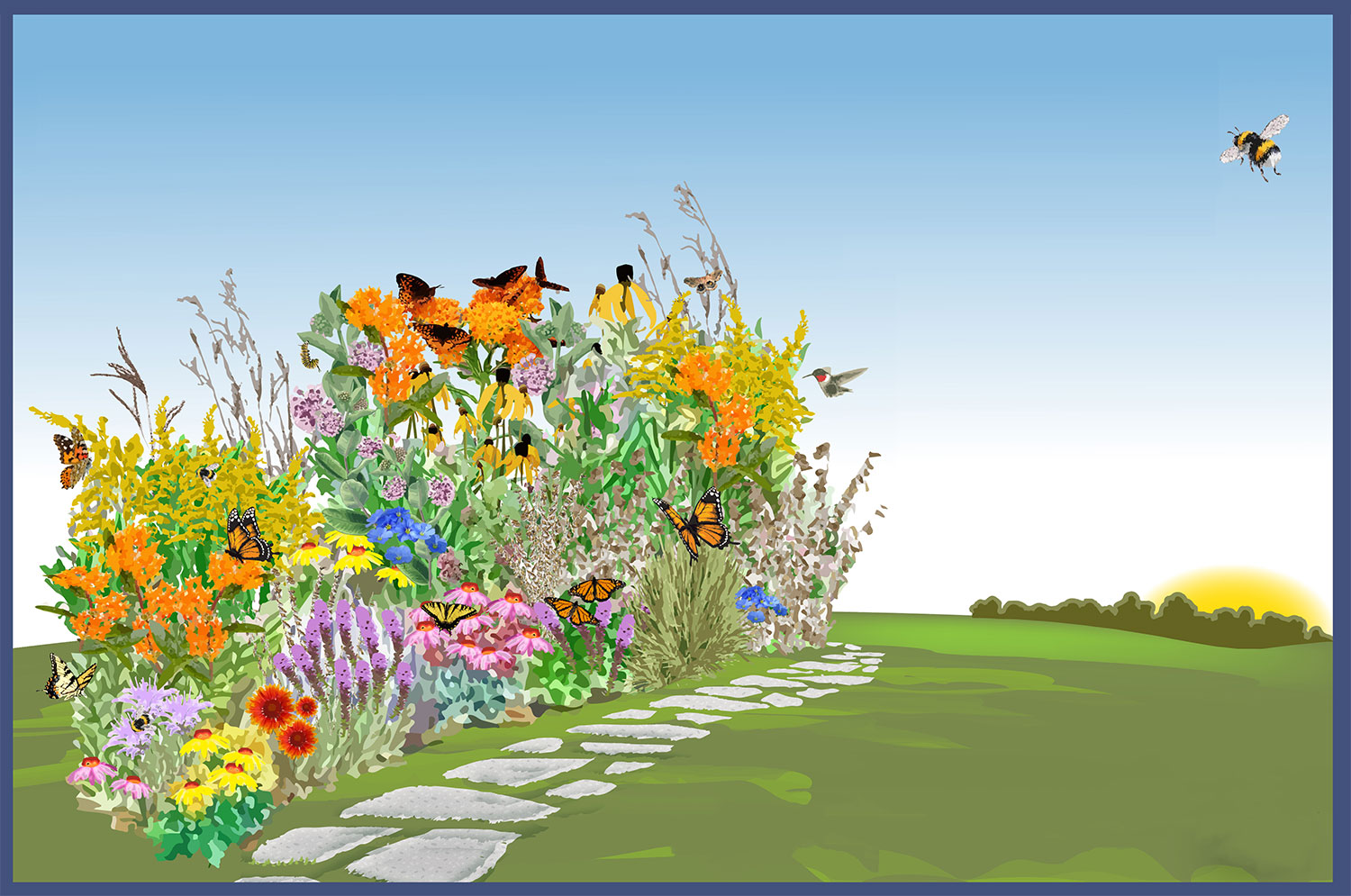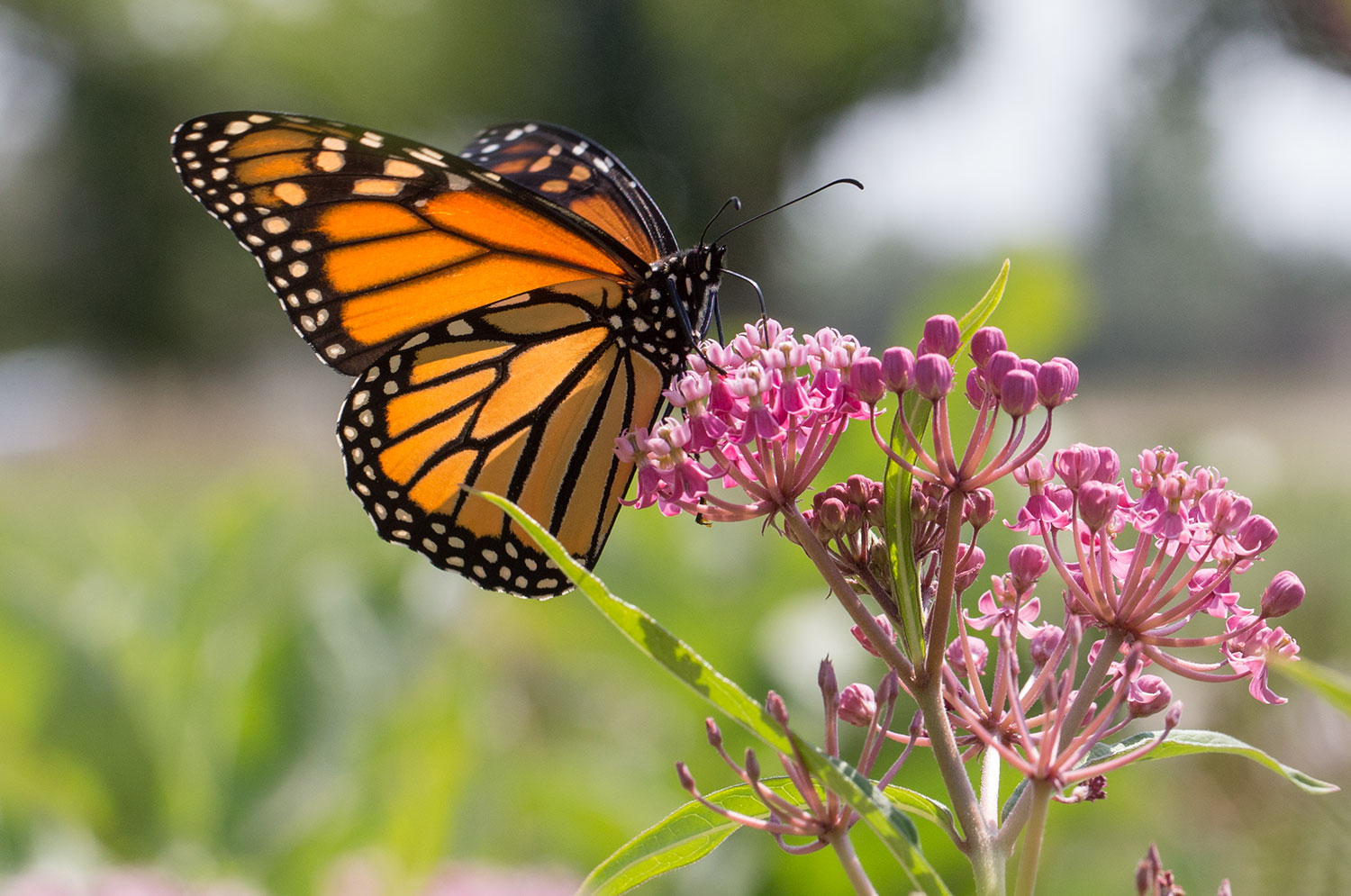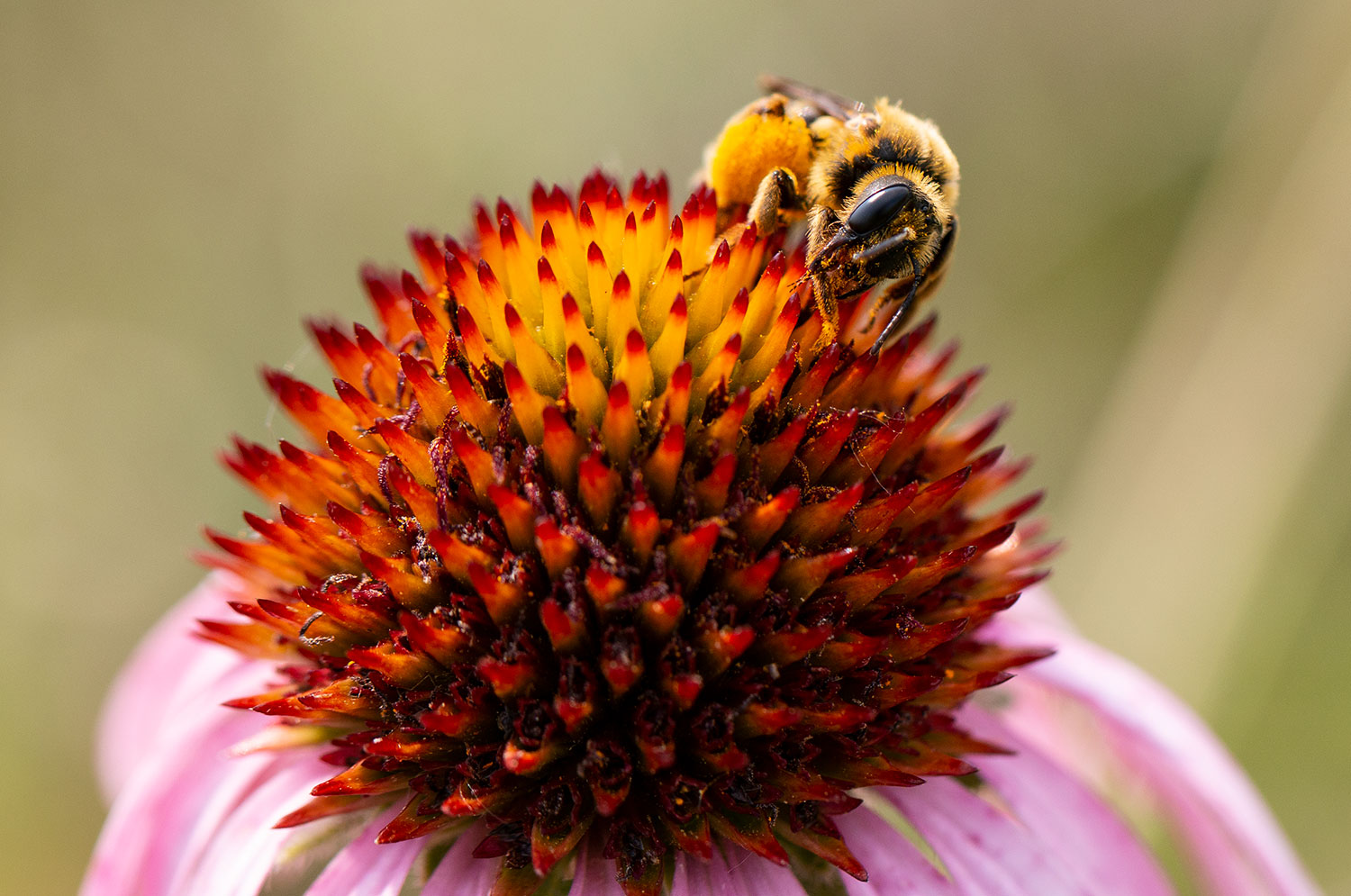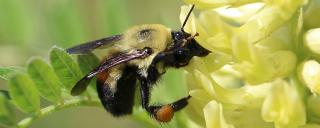
Pollinators
Insects are a crucial food source for wildlife species. Many insects also pollinate the food that humans eat. Unfortunately, recent indications are that some populations of pollinators such as bumble bees may be declining.
Several insect species have recently been listed, or are petitioned to be listed, under the Endangered Species Act. Perhaps most notable is the monarch butterfly. Scientists are still trying to understand the cause of their decline and if they are indeed at risk of extinction. There are actions North Dakotans can take to help conserve insects, which will also benefit other wildlife and wildlife habitat.
What is a pollinator?
A pollinator is any animal that moves pollen from one part of a flower to another plant. Pollen fertilizes the plant, and only fertilized plants make seeds or fruit. Without pollination, plants cannot reproduce and our food supply and habitat would be reduced.
In North Dakota, the principal pollinators are insects such as native bees, butterflies and some moths. North Dakota has about 150 species of butterflies, more than 1,400 moths, and an unknown number of bee species (probably hundreds). Bats and birds, while important pollinators in other states, are not considered significant pollinators in North Dakota.
Honey bees, although not native to North America, are vital agricultural pollinators and will benefit from pollinator conservation in North Dakota (see Honey Bee/Pollinator Research Study - 2016).

